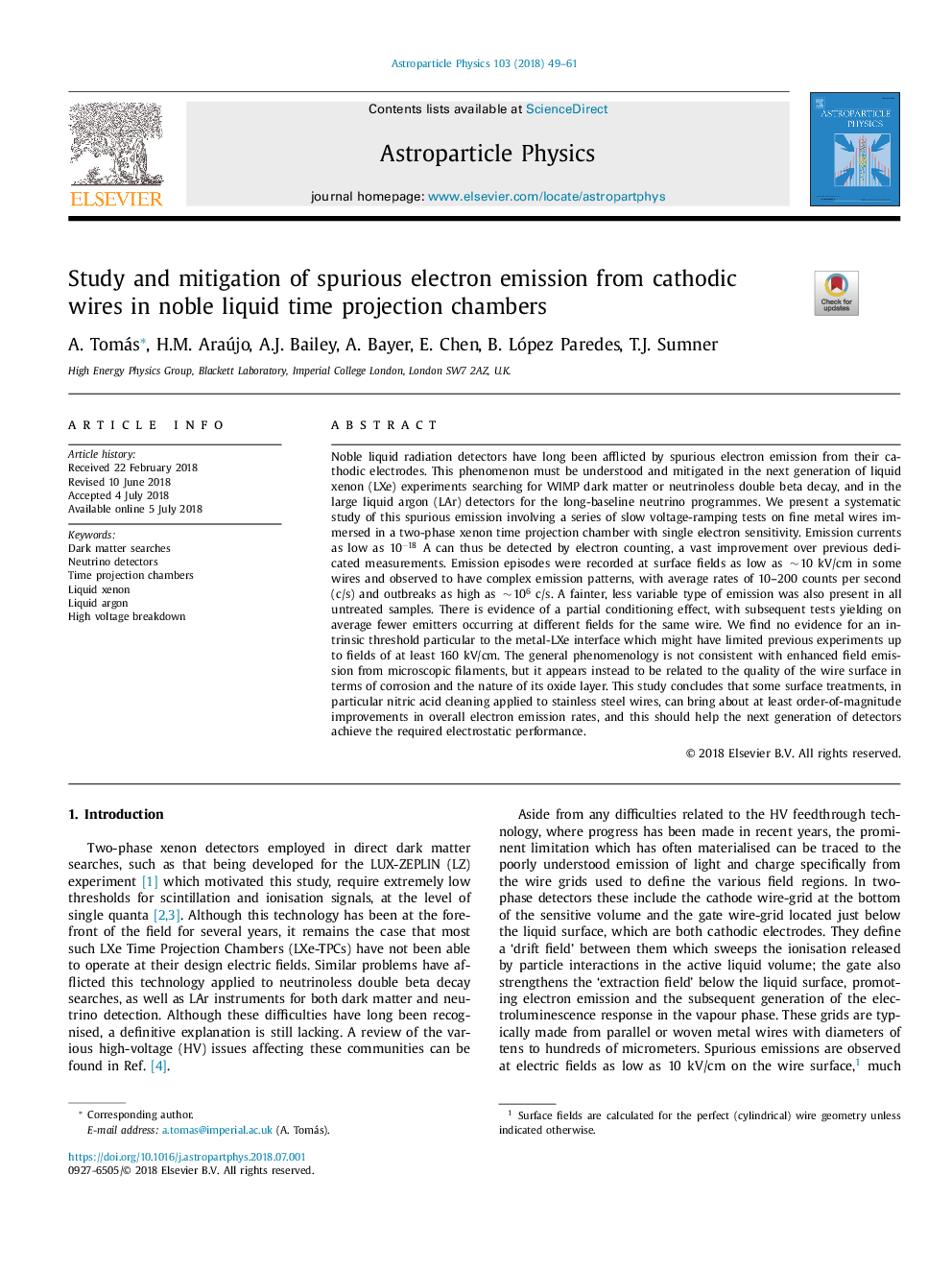| کد مقاله | کد نشریه | سال انتشار | مقاله انگلیسی | نسخه تمام متن |
|---|---|---|---|---|
| 8132642 | 1523323 | 2018 | 13 صفحه PDF | دانلود رایگان |
عنوان انگلیسی مقاله ISI
Study and mitigation of spurious electron emission from cathodic wires in noble liquid time projection chambers
ترجمه فارسی عنوان
بررسی و کاهش انتشار الکترون های جعلی از سیم های کاتدی در اتاق های طرح ریزی مایع نجیب
دانلود مقاله + سفارش ترجمه
دانلود مقاله ISI انگلیسی
رایگان برای ایرانیان
کلمات کلیدی
جستجوی ماده تاریک، آشکارسازهای نوریرون، اتاق های پیش بینی زمان، زنون مایع، آرگون مایع شکست ولتاژ بالا،
موضوعات مرتبط
مهندسی و علوم پایه
فیزیک و نجوم
نجوم و فیزیک نجومی
چکیده انگلیسی
Noble liquid radiation detectors have long been afflicted by spurious electron emission from their cathodic electrodes. This phenomenon must be understood and mitigated in the next generation of liquid xenon (LXe) experiments searching for WIMP dark matter or neutrinoless double beta decay, and in the large liquid argon (LAr) detectors for the long-baseline neutrino programmes. We present a systematic study of this spurious emission involving a series of slow voltage-ramping tests on fine metal wires immersed in a two-phase xenon time projection chamber with single electron sensitivity. Emission currents as low as 10â18 A can thus be detected by electron counting, a vast improvement over previous dedicated measurements. Emission episodes were recorded at surface fields as low as â¯â¼â¯10 kV/cm in some wires and observed to have complex emission patterns, with average rates of 10-200 counts per second (c/s) and outbreaks as high as â¯â¼â¯106 c/s. A fainter, less variable type of emission was also present in all untreated samples. There is evidence of a partial conditioning effect, with subsequent tests yielding on average fewer emitters occurring at different fields for the same wire. We find no evidence for an intrinsic threshold particular to the metal-LXe interface which might have limited previous experiments up to fields of at least 160 kV/cm. The general phenomenology is not consistent with enhanced field emission from microscopic filaments, but it appears instead to be related to the quality of the wire surface in terms of corrosion and the nature of its oxide layer. This study concludes that some surface treatments, in particular nitric acid cleaning applied to stainless steel wires, can bring about at least order-of-magnitude improvements in overall electron emission rates, and this should help the next generation of detectors achieve the required electrostatic performance.
ناشر
Database: Elsevier - ScienceDirect (ساینس دایرکت)
Journal: Astroparticle Physics - Volume 103, December 2018, Pages 49-61
Journal: Astroparticle Physics - Volume 103, December 2018, Pages 49-61
نویسندگان
A. Tomás, H.M. Araújo, A.J. Bailey, A. Bayer, E. Chen, B. López Paredes, T.J. Sumner,
